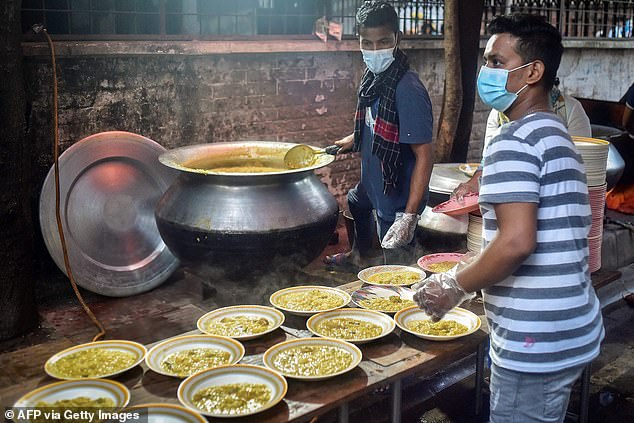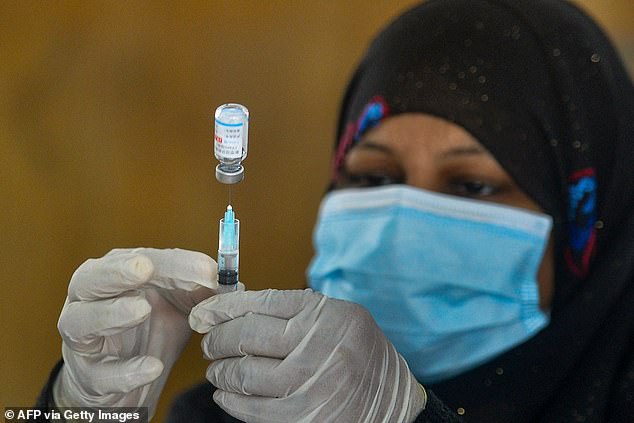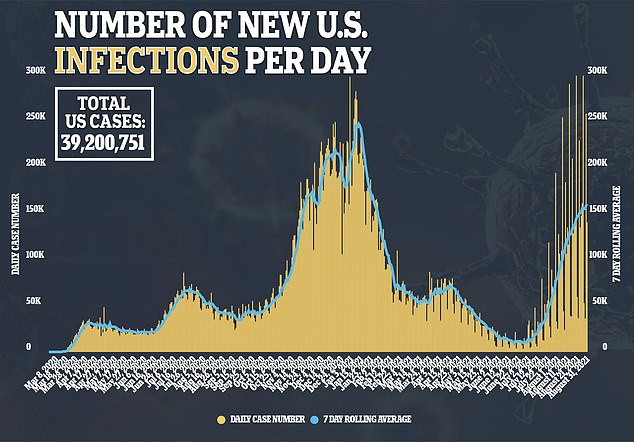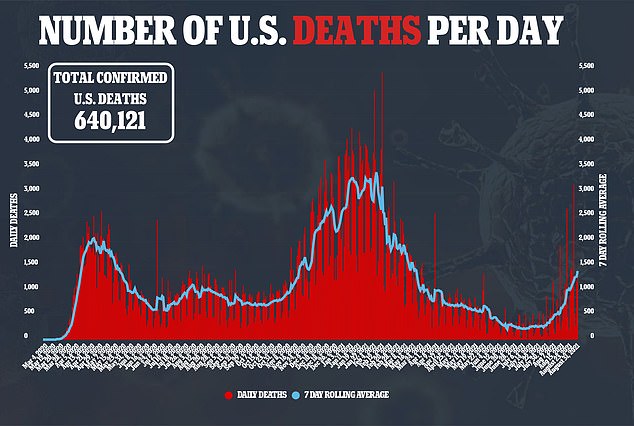The largest study on whether masks are effective at stopping the spread of COVID-19 to date has found that face coverings really do inhibit the virus’s spread.
A Yale University research team worked with local Bangladeshi health officials to identify 600 villages for the study, with a total of 340,000 participants monitored.
Using social and monetary incentives, the researchers pushed those in some of the villages to adopt mask wearing.
They found that mask wearing could prevent the spread of Covid by nine percent, and that surgical masks in particular could reduce infection by 35 percent among people 60 years of age or older.
Around 29 per cent of people approached ended up wearing masks consistently, with researchers saying that had mask wearing been more universal, the protection offered by them would likely have been far greater.

A Yale study found that mask wearing reduced COVID-19 transmission by 9% in villages were use of face coverings was encourage. Researchers believe their large scale study proves masks do work. Pictured: Two men in the Lalmatia area of Bangladesh wear masks while preparing food

Surgical masks were the most effective, the study found, as they reduced transmission by 35% in people 60 or older. Pictured: A health care worker in Keraniganj wears a surgical mask while preparing a dose of a COVID-19 vaccine
Researchers, whose study is currently in pre-print and awaiting peer-review, identified 1,000 villages across Bangladesh that would be fit for the study.
They narrowed the group down to 600, and split the villages into to evenly sized groups of 300.
In total, more than 340,000 people were a part of the massive study.
One was the intervention group, where researchers and health officials would make efforts to get residents to wear masks, the other was the control group, where no efforts were made.
Each village had a corresponding village in the other group that was similar in COVID-19 transmission, population and density.
Over a six week period from November 2020 to January 2021, they rolled out plans to increase masking in the intervention villages.
The researchers used a plan dubbed the ‘NORM’ model (No-costs, Offering information, Reinforcement and Modeling) to prod residents to wear masks more often.
One-third of residents in the intervention villages received cloth masks, while two-thirds were given surgical masks.
Residents were also distributed materials on proper mask wearing, and why masks were necessary, including an instructional video featuring regarded national figures and sports stars.


The team also promoted masks publicly through announcements or frequent offering of masks to unmasked people in public.
Religious leaders also spoke of the benefits of masks to their congregation.
Social incentives were used as well. Some villages were told they would receive $190 to go towards a public project if they achieved over 75 percent mask wearing.
Some were told they would receive an official certification of recognition from the national government if they reached that mark.
People would also regularly receive text reminders to mask-up, and some houses were given signs to place outside indicating that the residents supported mask wearing.
Mask wearing was minimal in many of these villages before the researchers came.
During the research period, 29 out of every 100 people in intervention villages were induced to wear masks.
The team found a nine percent reduction in COVID-19 cases attributable to the increased usage of masks, and it could have been higher had more people adopted the masks.
‘I think this should basically end any scientific debate about whether masks can be effective in combating Covid at the population level,’ Jason Abaluck, a lead researcher and economist at Yale, told the Washington Post.
Surgical masks were believed to be the most effective, reducing infection among people 60 or older by 35 percent.
Researchers found that the NORM method was effective, but some of the incentives, text message reminders and signage about ‘mask wearing households’ were not.
While the pandemic could be nearing its end in parts of the west, like the United States where vaccines are now prevalent, data like this could help countries like Bangladesh control the spread of the pandemic until they get access to a stockpile of vaccines.
‘While vaccines may contain the spread of [Covid] in the long-term, it is unlikely that a substantial fraction of the population in low- and middle-income countries will have access to vaccines by the end of 2021,’ researchers wrote.
‘Determining scalable and effective means of combating COVID-19 is thus of first-order policy importance.’

An estimated 8% of Bangladesh’s 163 million residents are vaccinated for COVID-19. Pictured: A man received a dose of the Sinopham COVID-19 vaccine in Keraniganj
The U.S. Centers for Disease Control and Prevention currently advises against traveling to the south Asian nation, classifying it as an area of very high transmission.
Bangladesh has suffered 1.5 million COVID-19 cases and 26,000 deaths since the virus first arrived last spring.
The pandemic reached its worst point in early August, when an record average of 14,000 cases a day were recorded.
Things are now under control at the start of September, though, recording less than 4,000 cases a day now.
The country has vaccinated an estimated eight percent of its 163 million people.
It is also the country with the 11th highest population density, making it more vulnerable to potential COVID-19 spread.
Source link : https://www.dailymail.co.uk/health/article-9947923/Study-340-000-people-Bangladesh-finds-masks-effective-preventing-spread-Covid.html











